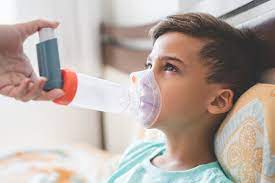 Depression is a state of mind in which the mood of a person is very low and the person is not interested in surrounding and any activities which gives him or her pleasure, to the extent that disturbs his or her normal works.
Depression is a state of mind in which the mood of a person is very low and the person is not interested in surrounding and any activities which gives him or her pleasure, to the extent that disturbs his or her normal works.
This is known as affective disorder in Psychiatry or mood disorder.
When it occurs for a particular season in year ,it is referred as to seasonal affective disorder-SAD
This disorder is in increasing trends in last 1-2 decades due to various reasons,in children.
The extreme form of this disorder urges a person to commit suicide.
It should be recognised early and addressed properly to keep the potency of a person at normal level.
It has been observed that ,children are particularly at risk to develop this disorder due to stressful family environment.
Vitamin D deficiency is a contributory factor to develop this disease entity ,
In the last few decades ,in India,children have been observed to be busy in indoor activities and more in screen activities.
On the one hand,this indoor confinement leads to less sun exposure and on the other hand the contents of screen may be depressive
In winter season ,naturally there is less time when there is sunlight, in which children can be exposed while playing.
Adequate vitamin D synthesis in the body occurs when skin is exposed to sunlight.
It has been observed that in winter season ,the level of serotonin is less in the body and melatonin balance is also disturbed.
These lead to increased symptoms of depression.
Sun exposure between 10 am to 3 pm is most effective for vitamin D synthesis from ultraviolet B light
Dr Deo Kumar Jha,
MBBS(Gold Medalist)
MD(Pediatrics)
Fellowship in Pediatric Pulmonology,AIIMS New Delhi
Pediatrician and Pulmonologist,Ghaziabad Delhi-NCR
 psychosocial factors should be addressed so as to control the symptoms of asthma
psychosocial factors should be addressed so as to control the symptoms of asthma